If you have often asked yourself ‘Why is my roti never soft?’ then do stick around for my essential How to Make Soft Roti Guide at the end of this Post. Roti is an unleavened flatbread requiring minimal ingredients and equipment to make the perfect edible tool for mopping up a luscious curry. As easy as it sounds, not all soft roti recipes were created equally. This recipe shares three easy tips on how to make soft roti every time!
Also known as chapati, this tortilla-like flatbread was mostly served with sugar bean or kidney bean curry in my childhood home in South Africa. We did not eat roti very often, if we did it was usually on Mondays (our primary day of abstinence from meat) or cold rainy days when Amma could not be out in the garden -therefore having time to make roti. Returning home from school on such days, we were often met with Amma’s soft roti rolls filled with butter and jam as tea-time treats. These days I make roti with my son, who loves to have them with cinnamon. And so our new tradition of how to eat soft roti was born.
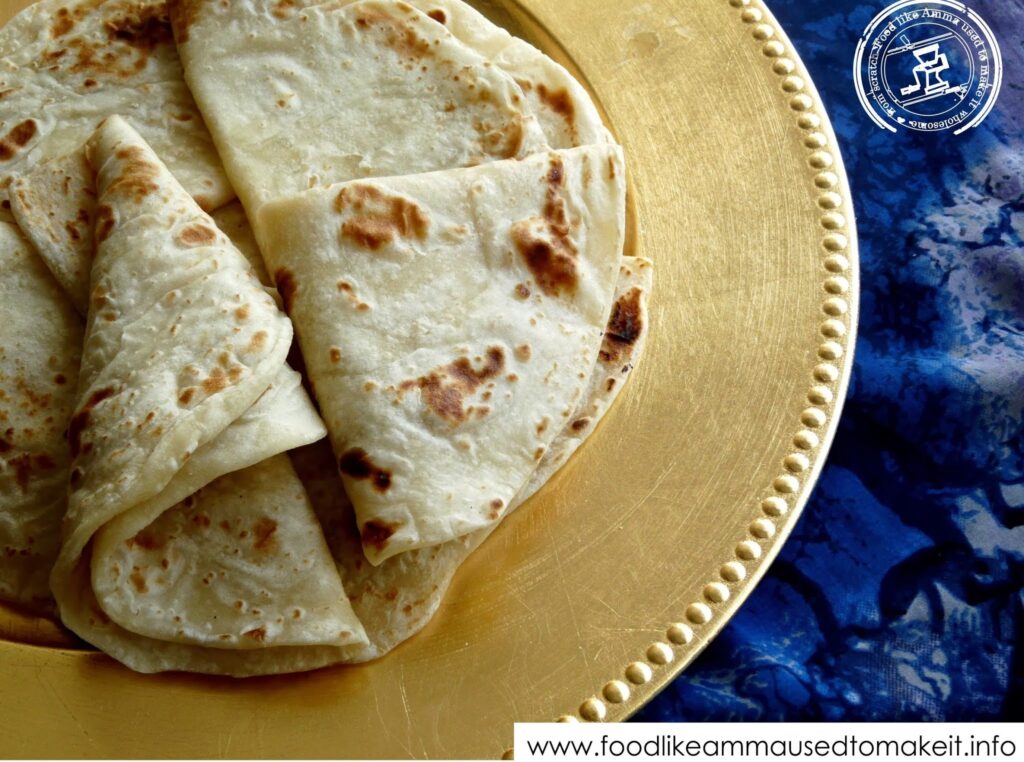
Table of Contents
How To Make Soft Roti Like Amma Used to Make It
Amma’s roti or handmade bread as she called it, was the best roti I’ve ever had. It comes out perfect every time. It is light, flaky and not greasy. Amma used to say “Roti should be soft yet flaky that one should peel and eat it”. No roti-making machines or special cookers are needed for this recipe. Since first publishing this recipe way back in August 2011, it has been one of my most popular recipes made all over the world! It has been mentioned in the South African Sunday Times!
“For one of the best recipes you’ll stumble across, just Google ”How to make soft roti – food like Amma used to make it” – Andrea Burgener
To make soft Roti like Amma used to make, you will need flour, hot water (just boiled), vegetable oil, a tablespoon of melted butter or ghee, a rolling pin and a thawa or heavy-based frying pan. I don’t own a thawa- a non-stick frying pan works just as well.

3 Terrific Tips to Make Soft Roti
The secret to Amma’s soft roti was threefold – her ingredient ratios, the resting time of the dough and her rolling and cooking technique.
- Use Boiling Water: First off, she used “boiling water“, water taken from the kettle as soon as it boiled. I mean this literally! As soon as the water boils, pour directly into the flour. The boiling water reacts with flour, breaking down gluten bonds to create a soft roti dough and the softest roti ever!
- Allow the Dough to Rest: Once a soft dough forms, cover and set aside to rest for 15-20 minutes.
- Cooking Technique: Apart from this ‘secret technique’ Amma had strict rules for cooking the roti – “The first side must be half cooked-then turn-then cook-then once more to cook fully. The bread must come up otherwise it won’t be cooked properly and make sure you press the sides”. The pan should also be hot otherwise you end up with hard rotis. Simply put, place the roti on a heated pan for a minute or two, and flip. Cook for 2-3 minutes then flip again.
Ingredients for Making Soft Roti
To make the best soft roti, you will need the following ingredients:
- Whole Wheat Flour (Atta): The main ingredient for roti is whole wheat flour, which gives it its characteristic texture and flavour.
- Substitutes: All-Purpose Flour: If whole wheat flour is not available, you can use all-purpose flour (maida) as a substitute. However, keep in mind that the texture and taste of the roti will be slightly different.
- Gluten-Free Flour: For those with gluten intolerance, you can use gluten-free flour such as rice flour, millet flour, or chickpea flour to make gluten-free rotis. These flours may require different proportions of water and may not yield the same softness as regular rotis.
- Water: Water is used to knead the dough and make it pliable. The amount of water required may vary based on the quality of the flour.
- Salt: A small amount of salt is added to enhance the taste of the roti.
- Oil or Ghee: Adding a little oil or ghee to the dough helps in making the roti soft and pliable. It also adds flavour.
- Substitutes: Dairy-Free Substitutes: Instead of ghee, you can use vegetable oil or vegan butter as a substitute for a dairy-free version of roti.
- Please note that while these substitutes can be used, they may alter the taste, texture, and overall quality of the roti compared to traditional whole wheat rotis. It’s always best to use the recommended ingredients for the most authentic results.
Tools for Making Soft Roti
- rolling pin or clean bottle (I’ve often used it when on holiday)
- mixing bowl
- tablespoon
- thawa (heavy-based cast iron pan) or non-stick frying pan or shallow pot
Step-by-Step Method for Making Soft Roti
Simply slide the images to view the complete process for making soft rotis.
How to Make Round Roti
- After following the steps in the slideshow above, take one of the cut pieces, stand upright then press down with your hand this will create a circle when flattened.
- Dust your hands with flour then work this small circle into a round shape then place it onto the worktop and roll it into a flat round disc. Make sure the roti is rolled as flat as possible. Thick rotis take longer to cook and are often too heavy to rise resulting in uncooked tasteless roti.
How to Cook Soft Roti
To cook your soft roti simply place it on the hot preheated pan (the pan should be hot). The cooking process for each roti should be 1 minute. Allow the roti to cook for 5-10 seconds before turning it over. On the second side allow cooking for a little longer, pressing the sides with your fingers to ensure it cooks.
Once the roti rises or you see bubbles form turn the roti. Careful not to burn your fingers as this can be quite hot, use a spatula if you like.
Once you have golden brown spots then the roti is cooked. Remove from stove then repeat this process for all remaining roti. Once all are cooked cover them with a piece of paper towel or dishcloth, this will keep the moisture in keeping the roti soft until you are ready to serve them.
To reheat roti simply place the roti on a heated pan for a minute or two on each side until warmed.
Follow the 1-minute video for instructions on how to cook roti. Perfect soft roti should rise when cooked and reveal multiple layers that can be peeled.
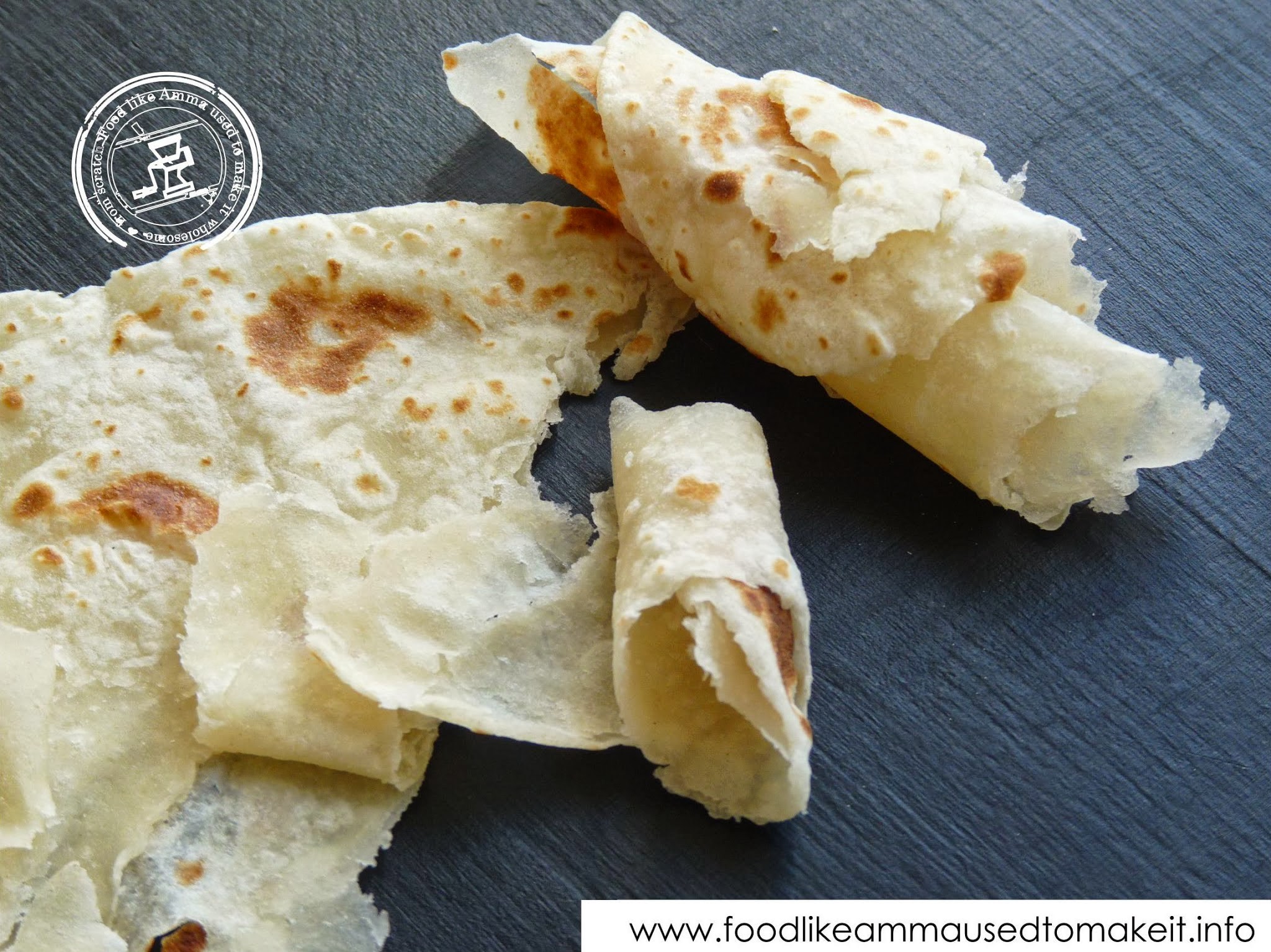

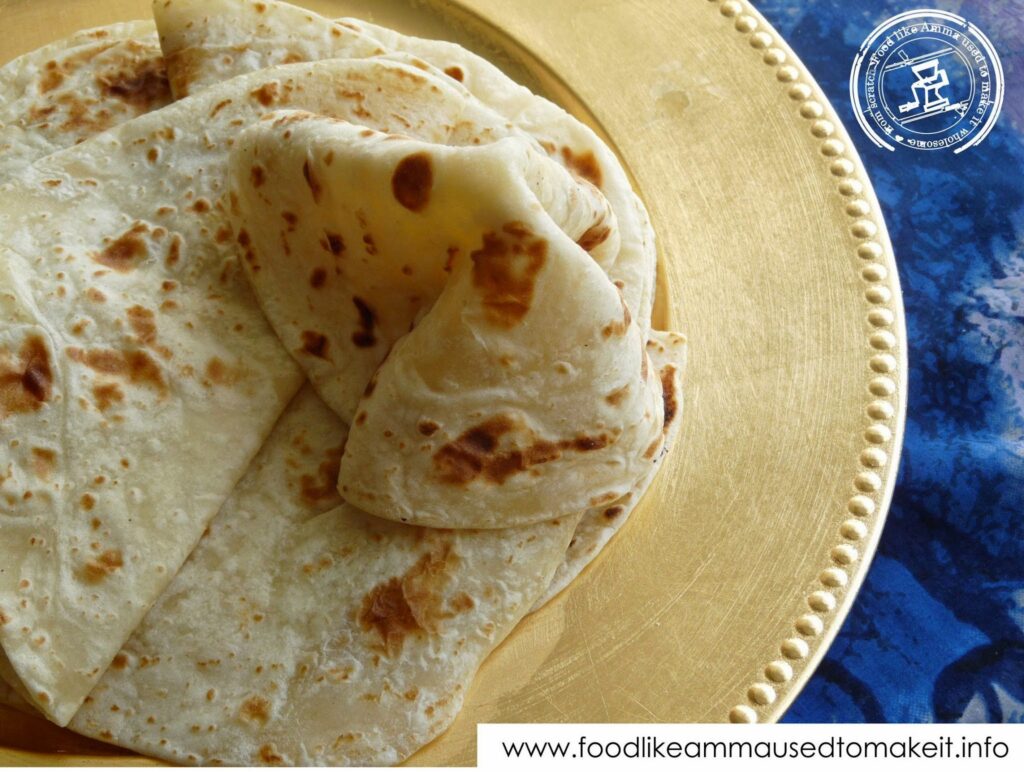
To reheat roti simply place the roti on a heated pan for a minute or two on each side until warmed.
Easy Soft Roti Recipe
2 Delicious Ways to Serve Your Soft Roti
My two favourite serving suggestions are Roti rolls, which remind me of Bean and Chip ones from late-night work at uni and my absolute favourite, Amma’s Sugar Beans Curry and Roti!
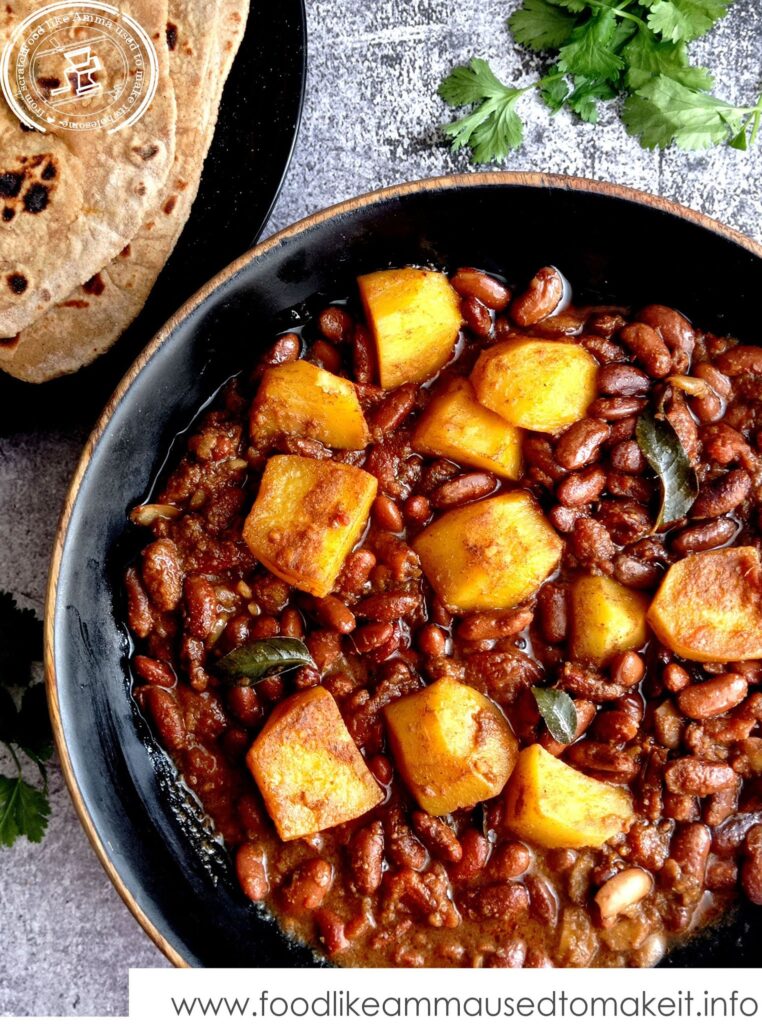
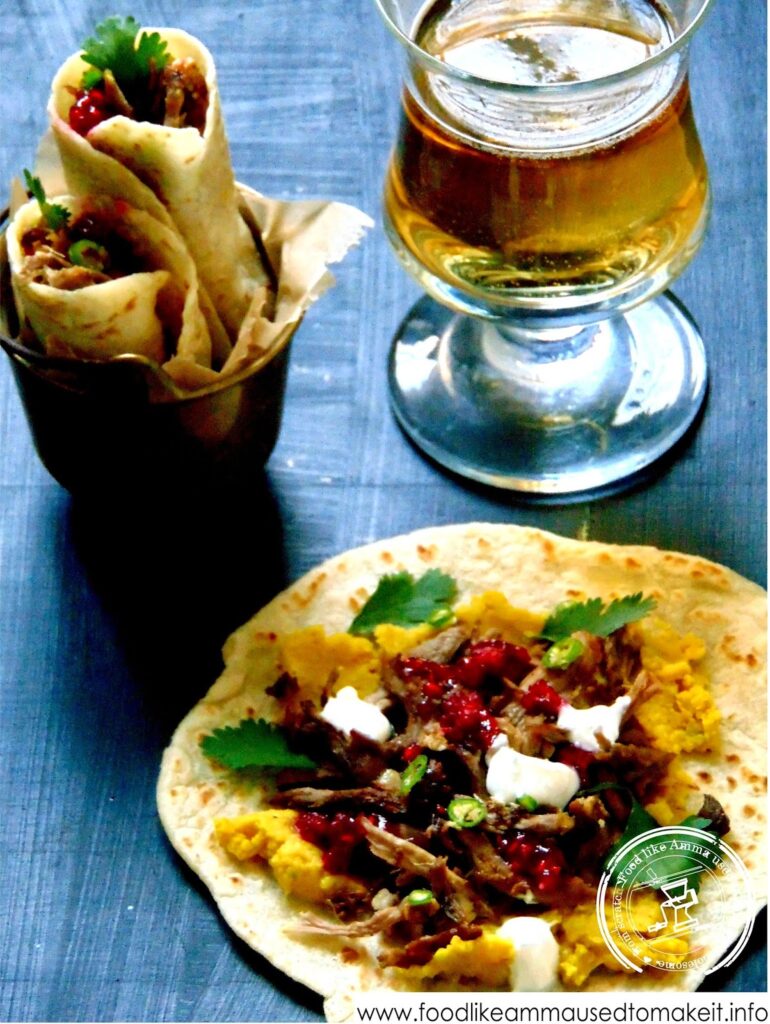
Soft Roti FAQ
What Four Should I Use To Make Soft Roti
To make soft Roti, you’ll want to use flour that has a high protein content. This helps create the gluten necessary for the dough to stretch and rise. Traditionally, Roti is made with whole wheat flour, which is known as “atta” in Indian cuisine. Atta is finely ground whole wheat flour that retains the bran and germ, making it more nutritious compared to refined flour.
However, if you prefer a softer texture, you can use a combination of whole wheat flour and all-purpose flour. This blend will give you the benefits of whole wheat flour while yielding a slightly lighter Roti. A commonly used ratio is 2 parts whole wheat flour to 1 part all-purpose flour. This combination provides a good balance between softness and structure.
When selecting whole wheat flour, look for brands that offer a finely ground variety, as coarser flours can result in a denser Roti. Additionally, it’s important to note that different brands of flour may have varying protein levels, so you may need to experiment to find the one that works best for you.
Remember, the key to making soft Roti lies not only in the choice of flour but also in the technique used to knead the dough and cook the Roti. Proper kneading, resting the dough, and cooking on a hot griddle are all crucial steps in achieving soft and fluffy Roti.
Why my roti is never soft?
If you’ve asked yourself this question then the reason could be any one of the following factors:
- Insufficient kneading: Proper kneading of the dough is crucial for developing gluten, which gives the roti its elasticity and softness. If the dough is not kneaded enough, the roti may turn out dense and tough.
- Inadequate resting time: After kneading the dough, it needs to rest for a sufficient period to allow the gluten to relax and the moisture to distribute evenly. If the dough is not given enough time to rest, the roti may become harder and less soft.
- Incorrect dough consistency: The dough should be soft and pliable but not sticky. If the dough is too dry or too wet, it can affect the texture of the roti. Adjust the amount of water or flour accordingly to achieve the right consistency.
- Rolling technique: The way you roll the roti can impact its softness. If you roll the dough too thin or with excessive pressure, it can lead to a denser and less soft roti. Be gentle while rolling and try to maintain an even thickness.
- Insufficient cooking time: If the roti is not cooked for long enough, it may not puff up properly and remain dense. Ensure that both sides of the roti are cooked evenly on a hot tawa (griddle) or pan.
- Improper heat management: The tawa or pan should be adequately preheated before cooking the roti. If the heat is too low, the roti may dry out and become less soft. Conversely, if the heat is too high, the roti can burn or cook unevenly.
- Storing improperly: If you’re not storing the rotis correctly, they can lose moisture and become hard.
How to Make Soft Roti Guide
Tips for making the best soft roti:
- Use the right flour: Choose a high-quality whole wheat flour (atta) specifically meant for making rotis. It should have a fine texture and be fresh. Avoid using all-purpose flour (maida) as it will not yield the same results.
- Proper dough consistency: Achieving the right consistency of the dough is crucial. Start by gradually adding water to the flour while kneading until you get a soft, pliable, and non-sticky dough. Avoid adding too much water at once as it can make the dough sticky.
- Resting time: Allow the dough to rest for at least 15-20 minutes. This resting period helps the gluten in the dough relax, making it easier to roll out the rotis and resulting in softer rotis.
- Knead the dough well: While kneading the dough, use the heel of your palm to apply pressure and work the gluten. This will make the dough smoother and improve its elasticity.
- Use a rolling pin: When rolling out the rotis, use a rolling pin and a clean, dry surface. Dust the surface and the dough with flour to prevent sticking. Roll the rotis gently and evenly to maintain a consistent thickness.
- Cook at the right temperature: Preheat a tawa or flat skillet on medium-high heat before cooking the rotis. Ensure that the tawa is hot but not smoking. This will help the rotis puff up and cook evenly.
- Flip at the right time: Cook one side of the roti until you see small bubbles forming, then flip it over. Cook the second side for a shorter time, allowing the roti to puff up. Applying gentle pressure with a clean cloth or spatula can help it puff up more.
- Cook on open flame (optional): For an additional touch, you can cook the rotis directly on an open flame for a few seconds after they have puffed up. This will give them a slightly charred and smoky flavour.
- Store properly: To keep the rotis soft, stack them in a covered container or wrap them in a clean kitchen towel or aluminium foil to prevent them from drying out.
- Remember, practice makes perfect, so don’t be discouraged if your first few attempts are not perfect. With time and experience, you’ll master the art of making soft rotis. Enjoy!
More Flatbread Recipes to Try


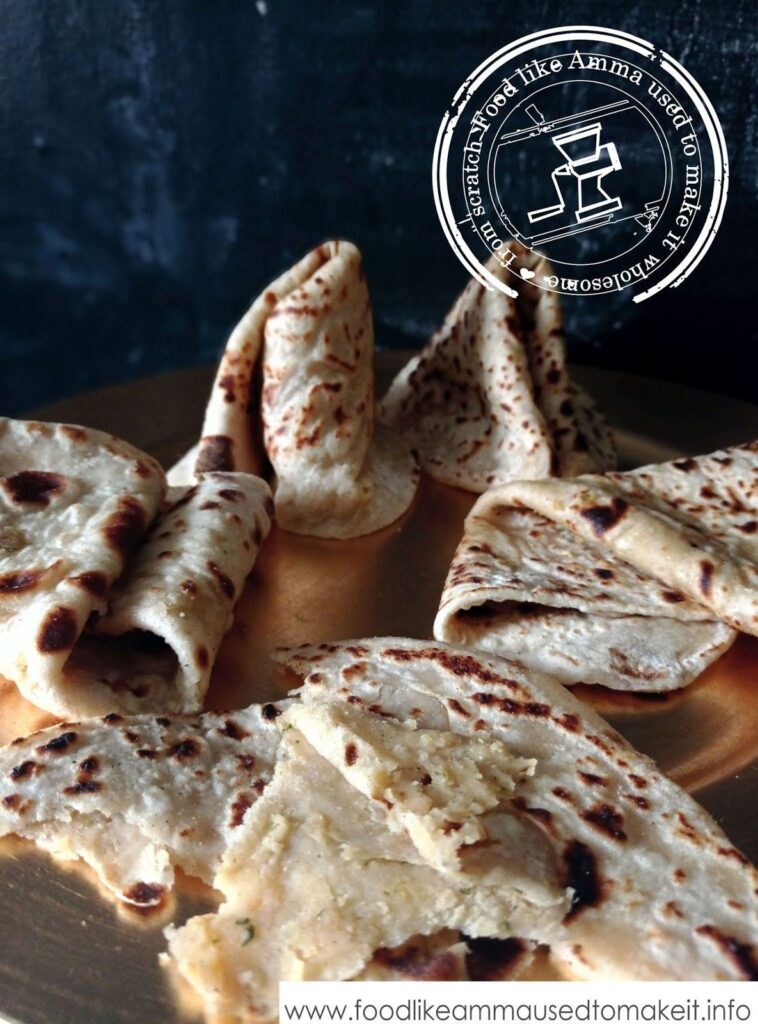

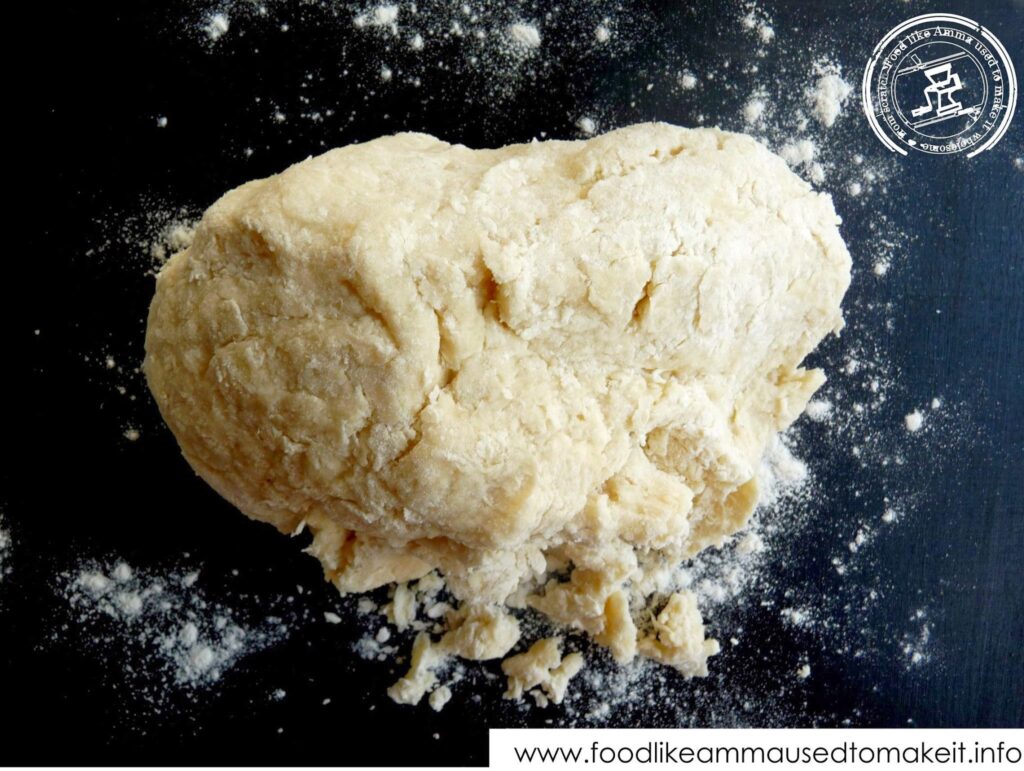
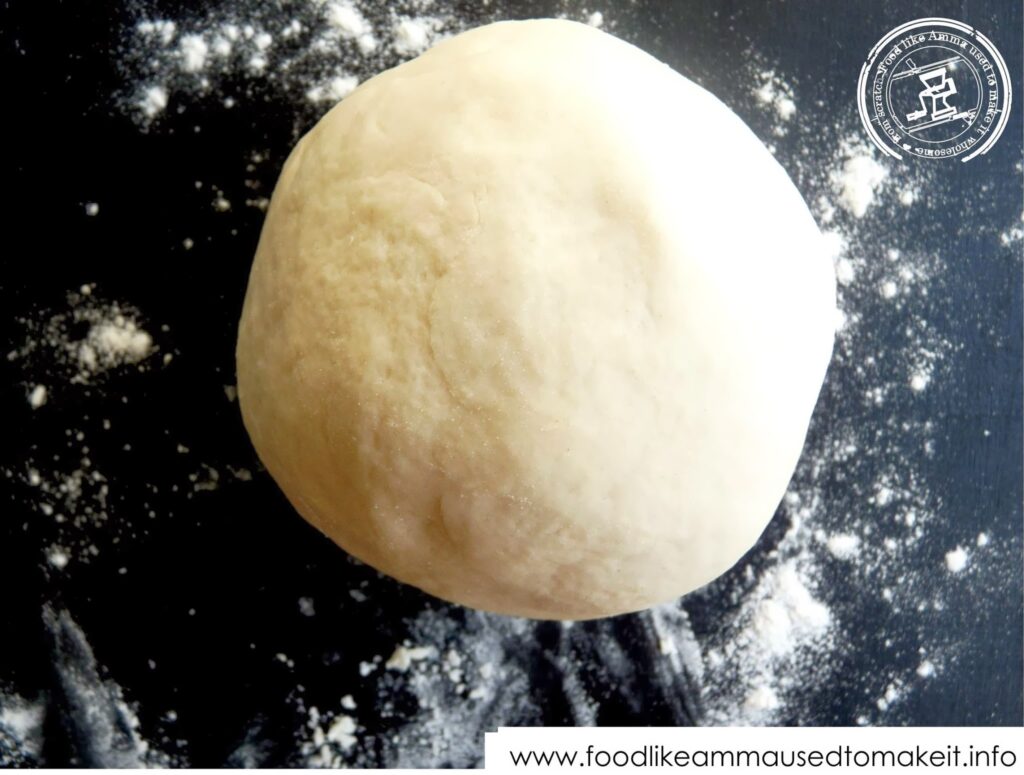




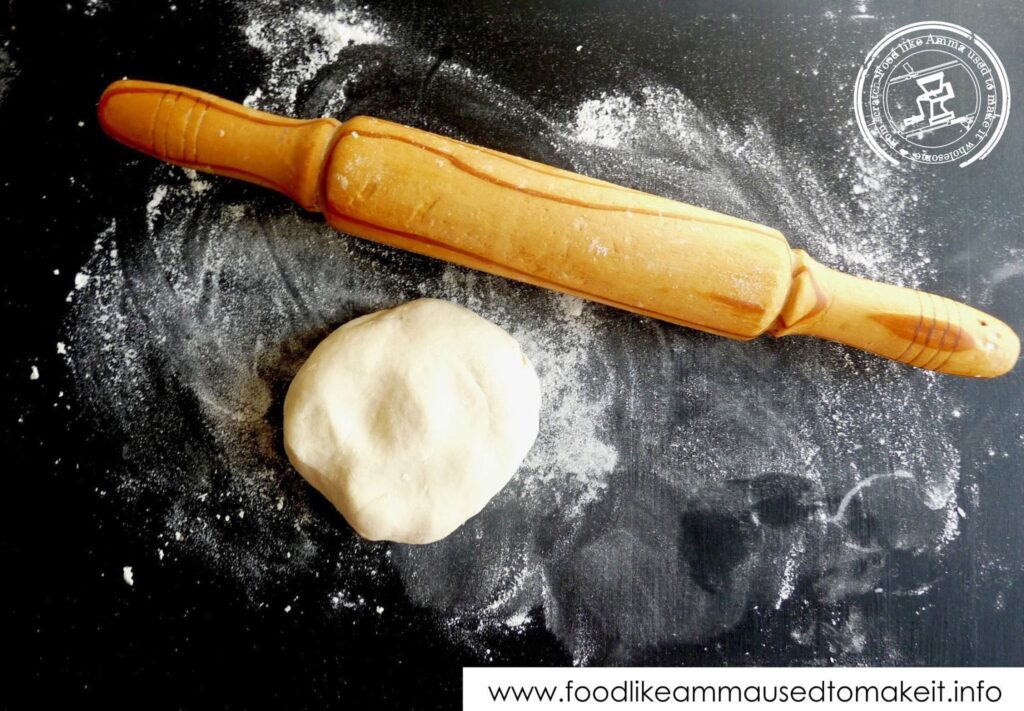
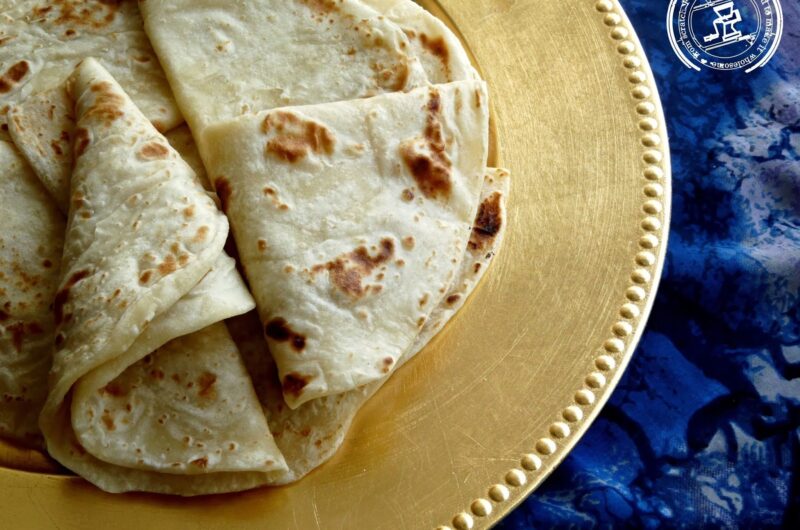
Can you use any other flour if you don’t have cake flour?
Yes,you can use any flour, bread flour works just as well. The key to this recipe is the ratio used, one part boiling water for 2 cups of flour. For more about the types of flour see my post on the subject…https://www.foodlikeammausedtomakeit.info/2011/10/which-types-of-flour-to-use-for-baking.html
Amazing Recipe. Followed it in exact detail and it was perfect.
Thank you for leaving feedback. Glad to hear that this roti recipe worked well for you!
Thank you for sharing your Amma's Roti recipe.I followed it and it was amazing here in the UK.This will be my no1 roti recipe.
Made roti following other recipe's and this has been my best so far. Thank you for sharing. Making these in Fiji.
Hi Judith, greetings in Fiji, thanks for taking the time to leave valued feedback.Glad to hear this recipe is a keeper for you too.:-)
Thanks for taking the time to leave feedback. So glad to hear that the recipe worked well for you too.
Truly appreciate the way you made this wonderful roti recipe. Everything is so nicely described that really helped. Looking forward for more such recipes in future too.
Good Day,
Silly question but I'm going to ask anyway. Lol…
How many millitres of boiling water to milligrams of cake flour?
Kind regards
Well its a 5/8 ratio, 5 ml of boiling water to 8 mg of flour
I hope this helps